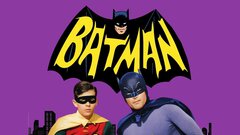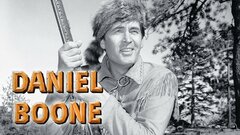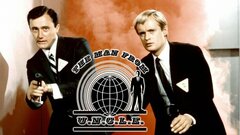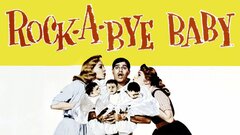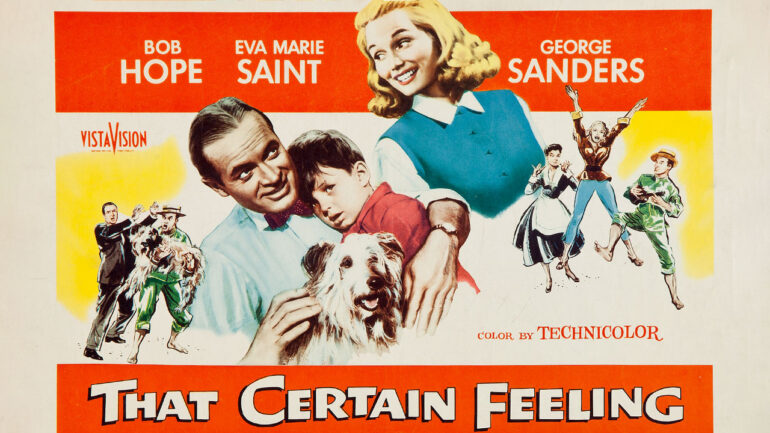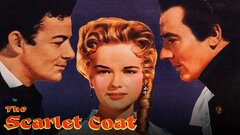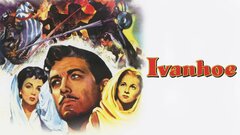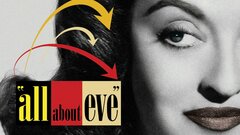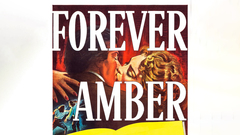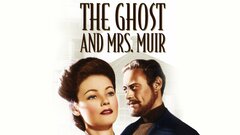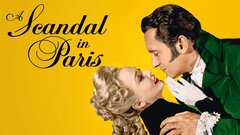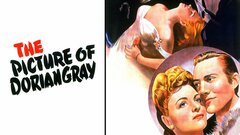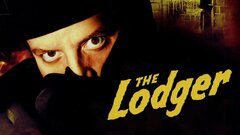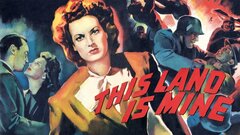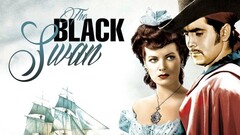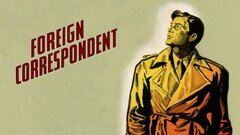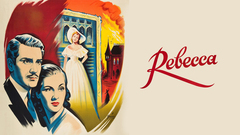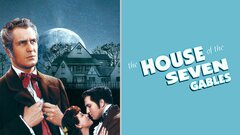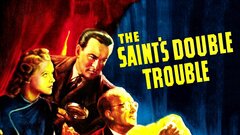With his imperious gaze and resonant speaking voice, debonair British expatriate George Sanders was a perfect fit in Hollywood before and after World War II, playing cads, bounders, rogues and even the occasional hero. A contract with 20th Century Fox gave Sanders a home base in Tinseltown but he often did his best work for other studios, including the villains of Alfred Hitchcock's "Rebecca" (1940) for United Artists, Joe May's "The House of the Seven Gables" (1940) for Universal, and as swank soldier of fortune Simon Templar in "The Saint Strikes Back" (1940) and its sequels at RKO Radio Pictures.
After the war, Fox slotted the epicene actor into a string of handsomely-mounted period pieces, including John Braham's "Hangover Square" (1945), Albert Lewin's "The Picture of Dorian Gray" (1945) and Joseph L. Mankiewicz's "The Ghost and Mrs. Muir" (1947). Sanders won an Oscar for playing an acerbic theatrical critic in Mankiewicz's show biz satire "All About Eve" (1950), and his collaboration with neorealist pioneer Roberto Rossellini on the undervalued "Viaggio in Italia" (1954) marked what many considered to be his last great film performance. Widowed in 1969 and hobbled by a debilitating stroke that affected his speech, Sanders took his own life in Spain in 1972, drawing closed the curtain on the life of a consummate actor who could never completely camouflage his own fierce intelligence.
George Henry Sanders was born in St. Petersburg, Russia on July 3, 1906. The second son of rope manufacturer Henry Sanders and his wife, Margaret Kolbe, a renowned horticulturist who gave up her career to support her husband's business affairs in Imperial Russia, Sanders was the beneficiary of a privileged and cultured childhood. He began his formal education at a Russian grade school but with the Communist overthrow of Tsar Nicholas II in October 1917, the Sanders family, which included older son Tom and younger daughter Margaret, fled to England.
Educated at the Bedales School, Brighton College and later at Manchester Technical College, Sanders was primed to follow his father into the textile business. After a brief sojourn in South America and a failed bid to break into the tobacco trade, Sanders returned to the United Kingdom. While working as a copywriter for a London advertising agency, he took the advice of a fellow employee to pursue acting - Sanders' prescient co-worker was none other than future Hollywood leading lady Greer Garson.
Adept at playing piano, guitar and saxophone, and boasting a plummy baritone singing voice, Sanders made his stage debut in a 1932 London production of E. Y. Harberg and Lewis E. Gensler's Broadway revue "Ballyhoo of 1932" (which had failed, two years earlier, to launch the career of vaudevillian Bob Hope). That same year, he made his film debut with an uncredited bit as a pub singer in "Love, Life, and Laughter" (1934) starring Gracie Fields as a lowly publican's daughter who falls impossibly in love with visiting prince John Loder. Sanders had another walk-on as a pilot in William Cameron Menzies' science fiction classic "Things to Come" (1936), the first British film to cost more than $1 million. Following his casting in the short-lived Broadway production of Noel Coward's musical "Conversation Piece" in 1934, Sanders achieved co-star status in two British films underwritten by Hollywood studios - in the Fox Film Company's con man comedy "Find the Lady" (1936) and in Paramount British Pictures' smuggling drama "Strange Caro" (1936).
Signed to a long-term contract with 20th Century Fox in the States, Sanders first appeared for the studio in Henry King's Academy Award-nominated costumer "Lloyds of London" (1936), in support of stars Tyrone Power and Madeleine Carroll. His naturally aristocratic comportment and haughty mien made him a perfect fit for all manner of barons, dukes, and viscounts as well as doomed Sanders to play more than his fair share of cads. The actor was a member of a foreign spy ring in "Mr. Moto's Last Warning" (1939), one of a series of mysteries produced prior to World War II and starring Peter Lorre as an unflappable Japanese sleuth. On loan to RKO, Sanders fought for law and order as British crime writer Leslie Charteris' international soldier of fortune Simon Templar in "The Saint Strikes Back" (1939), a sequel to "The Saint in New York" (1938), which had starred Louis Hayward in the title role. Sanders would play Templar four more times before ending his run with "The Saint in Palm Springs" (1941).
It became custom for Sanders to play heroes and villains alike with the same air of imperious bemusement. In Universal's "The House of the Seven Gables" (1940), he proved himself one of the few actors capable of making Vincent Price seem virtuous by comparison. Alfred Hitchcock cast Sanders in two of his early Hollywood films, "Rebecca" (1940) and "Foreign Correspondent" (1940), as Joan Fontaine's disreputable cousin in the former and as Yankee hero Joel McCrea's British second banana in the latter. A perennial second male lead at Fox, Sanders returned to RKO to star as dapper detective Gay Lawrence, a.k.a. The Falcon, in another run of whodunits beginning with "The Gay Falcon" (1940). After shooting "The Falcon's Brother" in 1942, Sanders abdicated the series lead to his real life brother, Tom Conway, who went on to headline nine more Falcon outings. For Fritz Lang, Sanders played a Gestapo scoundrel in "Man Hunt" (1941) while in Jean Renoir's "This Land is Mind" (1943), he brought refreshing nuance to the role of a Fascist sympathizer who understands only too late the cruel consequence of his politics.
In Henry King's Technicolor "The Black Swan" (1942), Sanders donned a red beard and wig to play a cutthroat who defies pirate cohorts Tyrone Power and Laird Cregar. The effete Sanders was paired twice more with the dour, heavyset Cregar in "The Lodger" (1944), a psychological thriller adapted freely from the novel by Marie Belloc Lowndes, and "Hangover Square" (1945), in which Sanders' coolly efficient Scotland Yard clinician deduces that hot-tempered composer Cregar is a serial killer. As Oscar Wilde's aphorism-spouting Lord Henry Wotton, Sanders stole Albert Lewin's "The Picture of Dorian Gray" (1945) from star Hurd Hatfield and in Joseph L. Mankiewicz's "The Ghost and Mrs. Muir" (1947) he attempted to pry comely widow Gene Tierney from the embrace of deceased ship captain Rex Harrison. Sanders took the lead in Lewin's "The Private Affairs of Bel Ami" (1947), as a cad clawing his way through Paris society, but was third-billed yet again in Cecil B. De Mille's Technicolor epic "Samson and Delilah" (1949), as the cruel Saran of Gaza, whose Philistine temple Victor Mature pulls down out of love for God and Hedy Lamarr.
Having married for the first time in 1940, Sanders divorced in 1949 to take up with former Miss Budapest Zsa Zsa Gabor, who had emigrated from Hungary with her sisters Magda and Eva in 1941. Gabor had divorced hotel magnate Conrad Hilton 18 months earlier and was then drawing a not inconsiderable alimony of $40,000 a year while she attempted to establish herself as an actress in Hollywood. Sanders and Gabor were married on April 2, 1949, at the Little Church of the West Wedding Chapel in Las Vegas, NV. Though the pair made for a handsome and often photographed couple, the union was a stormy one. A well-publicized story had Sanders suspecting Gabor of infidelity with handsome Dominican diplomat Porfino Rubirosa and hiring a private detective and a photographer to catch the pair in bed together on Christmas Eve. The couple separated at last in October 1953. Sanders filed for divorce in November, citing mental cruelty as the cause, while Gabor countersued, accusing her husband of inflicting severe mental distress and anguish. The divorce was finalized on April Fool's Day 1954, at which time Sanders quipped "I have been cast aside like a squeezed lemon."
While still married to Gabor, Sanders enjoyed his finest film role then to date, as acidic theatrical critic Addison DeWitt in Joseph L. Mankiewicz's show business exposé "All About Eve" (1950). Though the part had been intended for Jose Ferrer, the epicene DeWitt seemed bespoke for Sanders and a natural extension of characters he had played previously. In addition to stealing the film from stars Bette Davis and Anne Baxter and Marilyn Monroe (in an early role as DeWitt's bubble-headed escort), Sanders won the 1951 Academy Award for Best Supporting Actor. Despite the career tentpole represented by "All About Eve," Sanders was reportedly depressed and withdrawn throughout production, often communicating in monosyllables if not retreating into outright silence; director Mankiewicz related in later years that he had been forced to prod a performance out of the reticent Sanders. During this time, the actor grew increasingly neurotic about his finances and paying income tax. He began to invest his savings in dodgy tax shelter opportunities while accepting more and more assignments that would bring him overseas for work and out of the jurisdiction of the Internal Revenue Service.
Sanders traveled to England to oppose knight Robert Taylor in MGM's Technicolor "Ivanhoe" (1953) and to Naples and Rome to play Ingrid Bergman's alcoholic husband in Roberto Rossellini's "Viaggio in Italia" (1954). Back in the States, he was the aristocratic villain of Fritz Lang's Gothic swashbuckler "Moonfleet" (1955); in Lang's follow-up, "While the City Sleeps" (1956), he played an opportunistic newsman who sees in the predations of a serial killer an opportunity for career advancement. After 1955, Sanders began to appear regularly on episodic television and, in 1957, he hosted "The George Sanders Mystery Theatre," which ran for 13 episodes on NBC before its cancellation.
In 1958, he released a novelty album of standards on the ABE-Paramount Records label titled The George Sanders Touch: Songs for the Lovely Lady. Though he signed on for Joshua Logan's big screen adaptation of the Broadway hit "South Pacific," a fit of nerves prompted him to back out of the deal. The following year, he married actor Ronald Colman's widow, Benita Hume. In 1960, Sanders published his autobiography, titled Memoirs of a Professional Cad.
Sanders brought a disarmingly sincere performance to Wolf Rolla's "Village of the Damned" (1960), as one of several parents who learn their offspring are hyper-intelligent but malevolent alien entities. He was up to his dastardly tricks again as ladykiller Henri Landru in W. Lee Wilder's "Bluebeard's Ten Honeymoons" (1960) and played a traitorous gunrunner bedeviling virginal heroine Hayley Mills in Walt Disney's picaresque "In Search of the Castaways" (1962). Third-billed in "A Shot in the Dark" (1964), first of several sequels to Blake Edwards' 1963 caper comedy "The Pink Panther," Sanders enjoyed his bid as an aristocratic red herring and he brought trademark elegance to the role of a British Intelligence higher-up who points spy George Segal toward intrigue aplenty in Michael Anderson's espionage thriller "The Quiller Memorandum" (1966).
In 1967, Sanders older brother Tom Conway, who had fallen onto hard times, died of cirrhosis of the liver at the age of 63. That year, Sanders provided the voice of the villainous tiger Shere Khan in Disney's "The Jungle Book." He was preparing to return to Broadway as the persnickety radio host Sheridan Whiteside in "Sherry!," a musical adaptation of George S. Kaufman and Moss Hart's "The Man Who Came to Dinner" when Benita Hume was diagnosed with cancer and he was allowed by the producers to withdraw. Following Hume's death in 1969, a despondent Sanders was set up by ex-wife Zsa Zsa Gabor with her older sister, Magda, who had recently been rendered aphasic by a debilitating stroke. The marriage lasted only six weeks before being annulled. That same year, Sanders contributed the strangest performance of his career, appearing in drag as a homosexual spy in John Huston's labyrinthine espionage thriller "The Kremlin Letter" (1970). Felled himself by a stroke, which left him reliant on a cane and able to deliver dialogue only with great difficulty, Sanders grew dependent on painkillers and alcohol.
His final film role was as a Satanic manservant in "Psychomania" (1971), a living dead thriller that afforded him a climactic last laugh, if not much in the way of dignity. Having famously denigrated the craft of acting throughout much of his long and varied career, Sanders was humbled suddenly by his physical inability to earn even a basic living at it. After selling the home in Majorca, Spain that he had bought with Hume, Sanders checked into a hotel in Castelldefels, a coastal town in Barcelona, on April 23, 1972. Two days later, the 65-year-old actor was found dead of an overdose of Nembutal, having left behind two suicide notes - one to his sister and another inscribed "Dear World, I am leaving because I am bored. I feel I have lived long enough. I am leaving you with your worries in this sweet cesspool. Good luck."
A decade after Sanders' suicide, friend and fellow actor Brian Aherne published the remembrance A Dreadful Man: The Story of Hollywood's Most Original Cad, George Sanders while 1990 saw the release of the definitive biography George Sanders: An Exhausted Life by Richard Vanderbeets.
By Richard Harland Smith



















